Reservoir
Of all the components the reservoir gave me the most trouble. One needs a container that can withstand cryogenic temperatures without failure. The vessel also needs to keep heat transfer to an absolute minimum and be constructed of a material with a low heat capacity. Moreover, the vessel needs to be of an adequate size so that the throttle's exit stream liquid does not aerosolized the liquid; yet, it can not be too big that its heat capacity does not significantly slow down the cooling process. Finally, one needs a method to extract the liquid gas.
This is a large list of issues. I found that I could get down to the proper temperature, but I had issues collecting the liquid. When I finally was able to collect liquid air/nitrogen I had problems getting it out. I think going through my failures leading up to my final solution will be the most educational.
This was my first vessel. This was an inexpensive dewar that came with a science project I purchased years ago. There is a small vacuum container between the walls. I fashioned a PVC connector for the top. I was able to successfully collect liquid air in this vessel. The problem was I had no way to get it out. I removed the vessel and liquefied gas from my cooler only to find that the dewar and PVC connector were frozen together. Conclusion: failure.
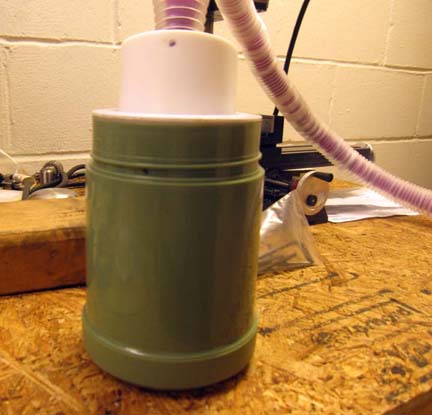
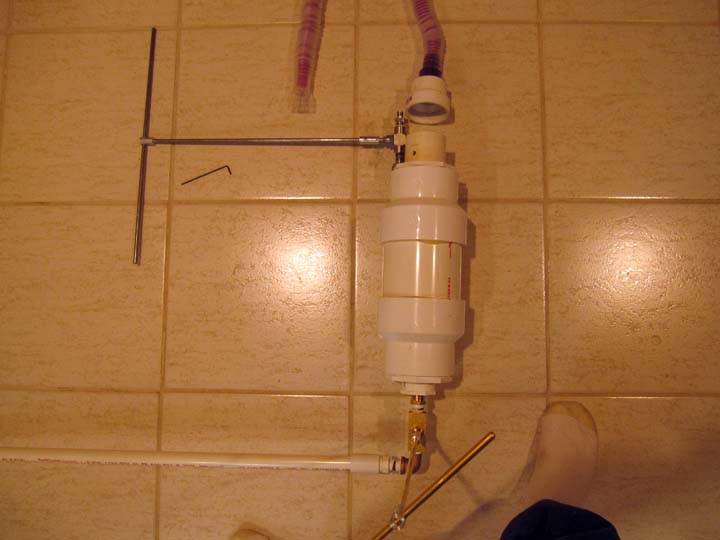
I fashioned a container out of PVC with a brass cryogenic valve at the bottom. I figured that if the temperature came down slow enough it might hold the liquid nitrogen. This had several problems. I carefully insulated the container with my alumina silica wool in a large cardboard box. I poured liquid nitrogen into it so I could see how it performed. The PVC fractured from thermal stress in multiple places.
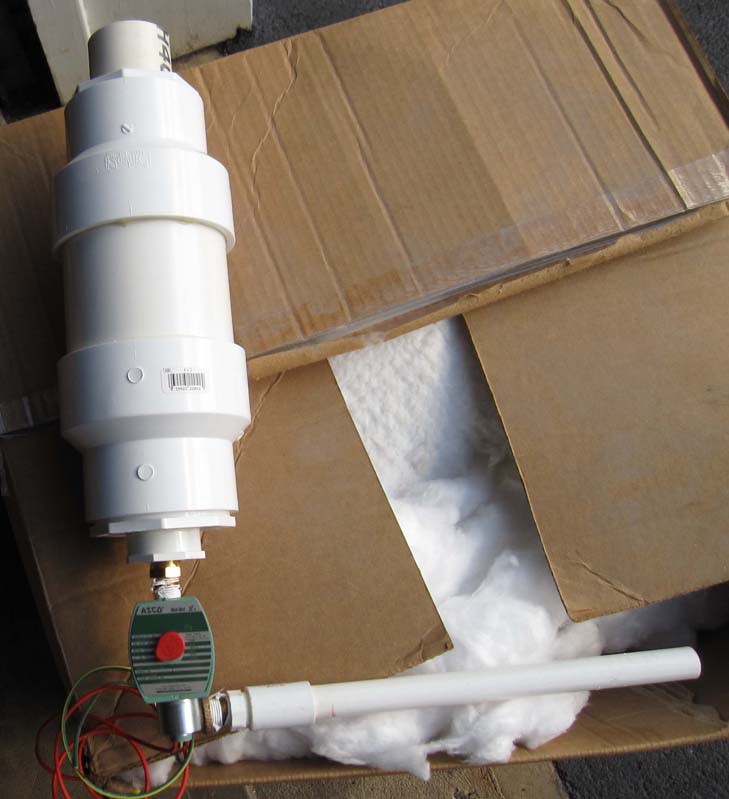
I tried again with the PVC. I added a solenoid-driven cryogenic valve. This had the advance of one less connection to the outside. I did not need a metal shaft connected to my valve, which would conduct heat. For whatever reason, the valve froze shut. Since I did this test outside, I believe water and CO2 vapor in the air caused the problem. Nonetheless, this was unacceptable and deemed a failure.
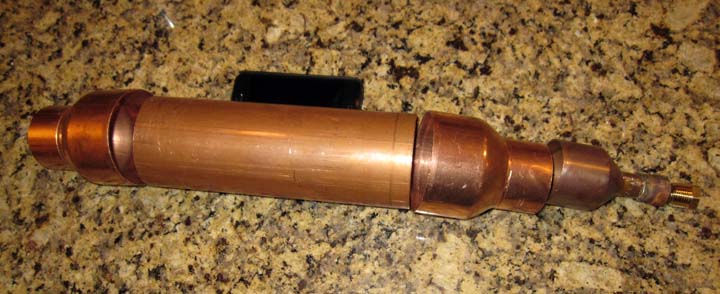

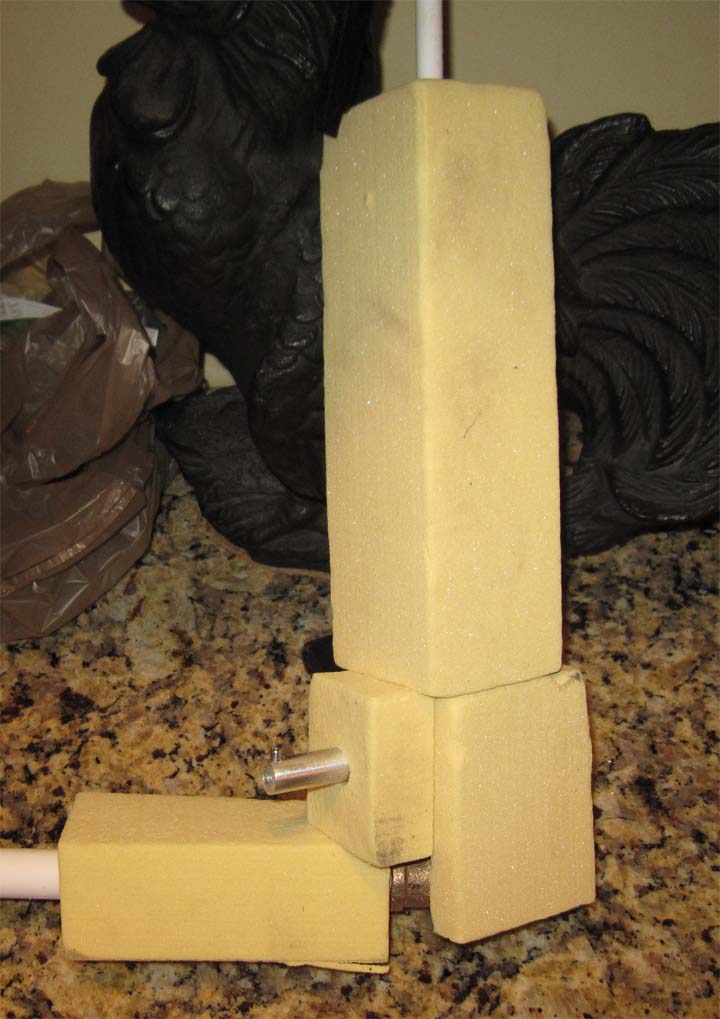
I figured that in order to withstand thermal shock I would need to construct a container out of copper, aluminum or stainless steel. I was not sure how any liquid oxygen would react with aluminum so I did not consider this material. Copper was easy to work with so I went ahead with this option. The copper did handle the temperatures remarkably well. However, the mass of copper and heat capacity thwarted by efforts to cool it down with reasonable efficiency. The vessel was too large for my through-put of cooled gas. Also, copper is such a great conductor of heat I found I could not contain liquid nitrogen in the vessel for too long when I tested it. By test I mean I took the vessel and insulated it with polyurethane foam and alumina silica. I then poured a liter of liquid nitrogen into the vessel. I never was able to achieve a point when there was no boiling.
I also realized that I did not have a good way to get the liquid out. I reverted back to a cryogenic brass valve at the bottom. However, the PVC pipe at the bottom would crack from the thermal shock.
Therefore, this plan was a failure.
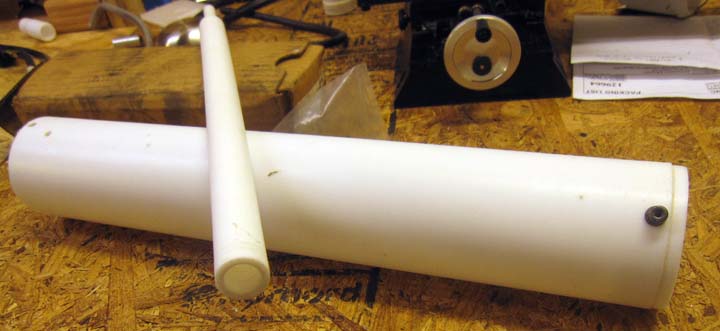
I really thought this would work. I made a vessel out of Teflon tubing. It has a low thermal conduction, low heat capacity and it can withstand cryogenic temperature. I machined a connector for the bottom with a very tight fit. I tapped a NPT hole at the bottom. I also used Teflon tubing for draining the vessel. I used the same brass cryogenic valve. I poured a liter of liquid nitrogen in the vessel after insulating it in a polyurethane jacket encased in the alumina silica wool. I found there was minimal boiling of the liquid. The only boiling was at the interface at the bottom connection with the brass release valve and where the bottom cap fit into the tube. The metal valve was just too good a conductor for heat and any boiling was no good. So, this one was close. This vessel may have worked if I had one solid tube of Teflon. This still needs a solution to get the liquid out of the vessel.

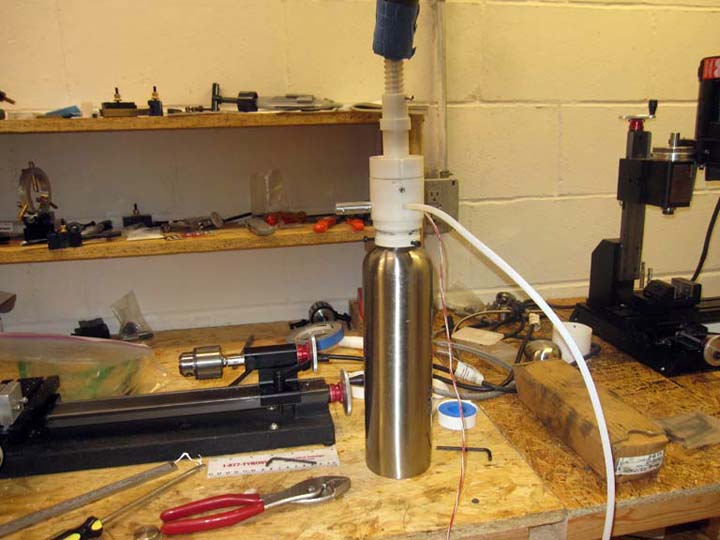
My solution was to use a stainless steel vacuum thermos. This is a plain thermos you can buy in a store or online. The typical size is around 500 to 750ml. I found one that is 1000ml. This is a double walled stainless steel dewar that is insulated with a vacuum. I was able to also mount a 4L dewar, but the capacity was too large for my airflow. With four-times the volume, cooling took four-times as long. This $20 solution was perfect. When I poured liquid nitrogen into the container there was no boiling. I let it sit for a few days and found it to still have liquid, meaning there was a low loss to evaporation.
I machined a Teflon adaptor for the top. The bottle's neck is slightly smaller below the orifice. This allows one to lock it down with three equally spaced machine screws. You need to lock the adaptor down because Teflon has low friction and the expanding gas coming out of the throttle causes enough pressure to pop the top off if it is not secure. Three holes are on the side. One is for the throttle valve control; the other is for the thermometer wire that goes through a fitted plug; the last is for a piece of 1/4" OD Teflon tubing that goes to the bottom of the bottle. A Teflon cap is on the outside end. All fittings are tight to prevent gas from escaping. A slight pressure in the bottle forces liquid through the tubing to the outside when one removes the plug. Thermal insulation surrounds the tubing outside of the cooling tower.